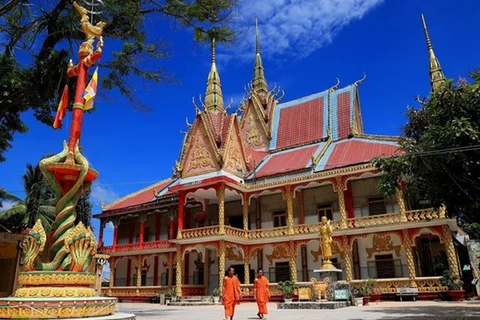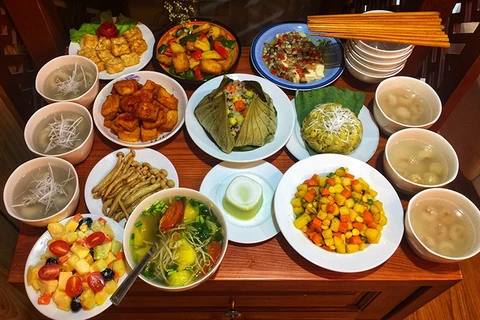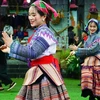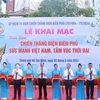Hanoi (VNA) – Surrounded by jungles and fields, Ka Ot pagoda in Tan Chau district in the southwestern province of Tay Ninh stands out for its distinct Khmer-styled architecture.
Construction of the pagoda began in 1980 and it was officially inaugurated in 1996, becoming a key religious site of Khmer ethnic minority people living in the area. It is considered one of six Khmer Theravada pagodas with unique architecture in the southwestern province.
The pagoda was named Kiri Sattray Menchey Ka Op, which literally means ‘good fame of a triumphant woman’. Its name was then shortened to Kiri Sattray Menchey and is often called by local people Ka Op or Ka Ot pagoda.
It was built on a large land plot believed to receive the sacred energy of Heaven and Earth. The surrounding area is full of soaring bamboo stalks which offer a tranquil setting.
The pagoda is located in Ka Ot hamlet in Tan Dong commune in Tan Chau district of Tay Ninh border province and is a tourist magnet in the region.
Its main hall, perched high above the ground, features a tiled roof with dragon heads adorning the corners. The view from the main hall is facing the East, which, according to local customs, faces the Buddha.
Visitors can admire the peaceful scenery, especially in the noon when the sun shines through the foliage, creating an enchanting yet meditative scene.
 Ka Ot pagoda named Kiri Sattray Menchey Ka Op, which literally means ‘good fame of a triumphant woman’ (Photo: VNA)
Ka Ot pagoda named Kiri Sattray Menchey Ka Op, which literally means ‘good fame of a triumphant woman’ (Photo: VNA) For Khmer people living in this border area, the Ka Ot pagoda not only is a sacred place where they conduct Buddhist practices but also their spiritual and cultural centre. Every year, several major Buddhist rituals are held at the pagoda such as Vesak, Buddha's birthday; the Chol Neasa to pray for favourable weather, bumper crops, and happy families, and the Kathina robe offering ceremony.
Besides, there are other traditional festivals associated with the Buddhist practice such as Chol Chnam Thmay, Sen Dolta, Ok Om Bok, and the rice offering ritual – altogether creating a vibrant-coloured picture of the rich spiritual practice and culture of Khmer people.
Along with the Ka Ot pagoda, visitors to Tay Ninh province cannot miss Ba Den Mountain Relic and Cultural Complex, and the Cao Dai Tay Ninh Holy See, 5 kilometres away from Tay Ninh city, the headquarters of the Cao Dai religion known as Caodaism.
The Ba Den complex has become an attractive tourist destination awaiting pilgrims and lovers of culture and nature in recent years.
The 300-year-old Ba (Lady) Temple was built on the mountainside of Ba Den, a sacred place for Buddhists. It attracts thousands of pilgrims headed for the temple to pray for peace, good fortune and prosperity.
The busiest time of the year for pilgrimages is the first lunar month during the Ba Den Mountain Spring Festival and the 5th and 6th days of the fifth lunar month for Ba Den (Black Lady)'s birth anniversary.
Hoa Dong Temple, Hang Temple, Quan Am Temple and Trung Temple with distinct architectural styles are scattered around Ba Den mountainside.
Meanwhile, the giant, bright Cao Dai Tay Ninh Holy See which was built in 1931 and officially inaugurated in 1955 is the most important shrine for the religion’s four million followers.
The Holy See, with its western and eastern architectural style, has become a popular tourist attraction in Tay Ninh. It is worth visiting during prayer sessions. The session at noon is most popular with tour groups, according to a local tour guide./.























